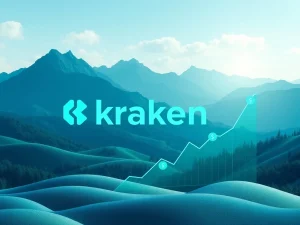Revolutionary Tokenized Deposits: Custodia Bank & Vantage Launch Secure Blockchain Banking Platform

The financial landscape is rapidly evolving. Traditional banking institutions now explore innovative digital solutions. This evolution brings **tokenized deposits** to the forefront. A significant development recently emerged from Custodia Bank and Vantage Bank. They introduced a pioneering platform for these digital assets. This advancement aims to bridge the gap between conventional finance and the burgeoning blockchain ecosystem. It offers banks a secure and efficient way to leverage distributed ledger technology. Ultimately, this move promises to reshape the future of banking and payments.
Custodia Bank and Vantage Bank Pioneer Blockchain Banking
Custodia Bank, a leader in digital asset banking, and Vantage Bank have officially launched a new blockchain solution. This platform enables traditional banks to issue **tokenized deposits**. It marks a crucial step in modernizing financial services. The solution allows banks to benefit from blockchain’s inherent advantages. These include near-instant and low-cost transactions. Furthermore, it ensures interoperability among different banking entities. Both institutions emphasized their commitment to safeguarding customer deposits. They also aim to retain the core banking relationship. This innovative framework ensures efficiency and security. It protects core deposits from potential disintermediation risks.
The patent-protected system is designed for broad institutional adoption. It offers a turnkey approach for banks of all sizes. They can now participate in the digital asset economy directly. This initiative follows Custodia’s earlier success. Seven months prior, Custodia became the first bank to issue tokenized deposits on a permissionless blockchain in the U.S. This earlier collaboration also involved Vantage. The current platform leverages Custodia’s bank-focused blockchain. It also uses Infinant’s Interlace network. This robust infrastructure supports the secure issuance and management of digital deposits.
Understanding Tokenized Deposits: A Digital Leap for Banks
**Tokenized deposits** represent digital versions of bank deposits. They are issued directly on a blockchain. These tokens signify real U.S. dollars held by banks. Therefore, they combine the stability of traditional banking with blockchain’s efficiency. This innovation addresses a key challenge in the financial sector. It aims to create seamless interoperability between crypto and traditional banking systems. Banks maintain full control over their wallets. These wallets contain both tokenized deposits and GENIUS Act-compliant stablecoins. This control is paramount for security and regulatory compliance. Essentially, the platform introduces a single digital token. This token can function effectively as both a tokenized deposit and a stablecoin. Consequently, it simplifies digital asset management for institutions.
Key advantages of tokenized deposits include:
- Enhanced Efficiency: Transactions settle almost instantly.
- Reduced Costs: Lower overheads compared to traditional payment rails.
- Improved Security: Blockchain’s cryptographic security protects assets.
- Greater Interoperability: Seamless interaction with other banks and digital platforms.
- Regulatory Compliance: Designed to meet existing banking regulations.
Navigating the Stablecoin Market Landscape
The current crypto bull market has seen significant institutional adoption. Banks and traditional financial companies are actively exploring the crypto space. The **stablecoin market** has notably expanded, now valued at over $300 billion. This growth received a substantial boost from the GENIUS Act. President Donald Trump signed this act in July. However, this expansion also brought concerns. Banks have expressed apprehension to regulators. They worry that stablecoin issuers offering interest and yield on deposits might disrupt the traditional banking system. This potential disruption could lead to significant deposit outflows.
The U.S. Treasury projected the stablecoin market could reach $2 trillion by 2028. Such growth might lead to $6.6 trillion in banking deposit outflows. This scenario poses a considerable threat to conventional banking models. For banks, tokenized deposits offer a strategic defense. They help mitigate these potential outflows. They also preserve banks’ competitive edge. The banking industry continues its inevitable shift towards more digital solutions. Thus, these innovative deposit mechanisms become increasingly vital.
Mitigating Risk: How Custodia Bank’s Solution Protects Core Deposits
The solution developed by **Custodia Bank** directly addresses the challenges posed by the evolving digital asset landscape. It provides a robust framework. This framework allows banks to embrace blockchain technology. At the same time, it protects their foundational business: core deposits. The design specifically prevents disintermediation. This means banks can offer digital asset services without losing direct customer relationships. They maintain control over the entire process. This approach is crucial for maintaining stability and trust in the financial system. Furthermore, it ensures that banks remain central to the digital economy.
By issuing tokenized deposits, banks effectively digitize their liabilities. This allows them to participate in the digital asset space securely. They do so under existing regulatory frameworks. This method contrasts with relying solely on private stablecoins. Private stablecoins often operate outside direct banking supervision. Consequently, Custodia’s platform offers a regulated pathway. It empowers banks to innovate responsibly. This responsible innovation is key to long-term financial stability.
Real-World Applications of Blockchain Banking
Custodia’s solution is already demonstrating real-world impact. The bank is running early pilot programs. These programs leverage its dollar tokenization technology. For example, one initiative facilitates cross-border payments. This benefits transportation companies. Another program supports milestone-based disbursements in construction projects. This enhances payment transparency and efficiency. Moreover, the technology aids supply chain settlement for manufacturers. It provides more flexible and timely payment options. Service industries also benefit from more adaptable payroll solutions. These diverse applications highlight the versatility and practical utility of **blockchain banking**.
These pilot programs showcase the tangible benefits of tokenized deposits. They prove that the technology can streamline complex financial operations. Furthermore, it reduces costs and increases speed across various sectors. The successful implementation of these programs reinforces the potential. It demonstrates how tokenized deposits can transform traditional financial workflows. This broad applicability underscores the strategic importance of Custodia’s platform.
The Future of Digital Finance and Traditional Banking
The launch of this platform marks a significant milestone in **digital finance**. It signals a growing convergence between traditional banking and blockchain technology. As institutions increasingly adopt digital solutions, tokenized deposits will play a pivotal role. They offer a regulated and secure alternative to private stablecoins. They also provide a foundation for future innovations. The concept of a ‘digital dollar’ or central bank digital currency (CBDC) continues to gain traction. Tokenized deposits offer a commercial bank-led approach to digital currency. This approach can complement future CBDC initiatives. It also ensures banks remain relevant in a rapidly digitizing world.
The industry is moving towards a future where digital assets are integrated into everyday financial transactions. This integration will likely redefine payment systems, lending, and investment. Custodia and Vantage Bank are positioning themselves at the forefront of this transformation. Their platform not only addresses current market needs. It also lays the groundwork for future advancements in financial technology. This forward-looking strategy will ensure banks can thrive in the digital age.
In conclusion, the collaboration between Custodia Bank and Vantage Bank represents a monumental leap forward. Their platform for tokenized deposits provides a secure, efficient, and interoperable solution. It empowers banks to embrace blockchain technology. It also safeguards customer funds. This initiative directly addresses the challenges posed by the expanding stablecoin market. It positions traditional banks for sustained growth in the era of digital finance. As the financial world continues its digital transformation, such innovations will become indispensable.










